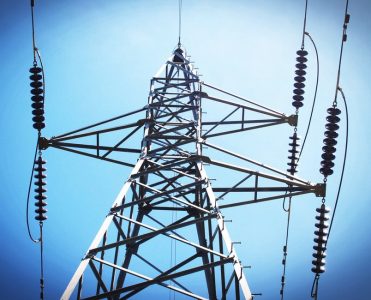Chapter I: The Classic Separation Between the Ponderable and the Imponderable — Does There Exist a World Intermediate Between Matter and the Ether?
Science formerly divided the various phenomena of nature into two sharply separated classes, with on apparent break between them. These distinctions have existed throughout all branches of knowledge, and in physics as well as in biology.
The discovery of the laws of evolution has caused the disappearance from the natural sciences of divisions which formerly seemed impassable gulfs, and, from the protoplasm of primitive beings up to man the chain is now almost uninterrupted. The missing links are every day reforged and we get glimpses of how the change from the simplest to the most complicated beings has operated step by step throughout time.
Physics has followed an analogous route, but has not yet arrived at unity. It has, however, rid itself of the fluids which formerly encumbered it; it has discovered the relations which exist between the different forces, and has recognized that they are but varied manifestations of one thing supposed to be indestructible: to wit, energy. It has also established permanence throughout the series of phenomena, and has shown the existence of the continuous where there formerly appeared only the discontinuous. The law of the conservation of energy is in reality only the simple verification of this continuity.
There remain, however, in physics two deep gaps to be filled before this continuity can be established everywhere. Physics, in fact, still maintains that a wide separation exists between matter and energy, and another, not less considerable, between the world of the ponderable and that of the imponderable — that is to say, between matter and the ether. Matter is that which is weighed. Light, heat, electricity and all the phenomena produced in the bosom of the imponderable ether, as they add nothing to the weight of bodies, are regarded as belonging to a very different world from that of matter.
The scission of these two worlds seemed finally established. The most illustrious scholar of our times had even come to consider the demonstration of this separation as one of the greatest discoveries of all ages. This is how M. Berthelot expressed himself on the subject at the recent inauguration of the monument to Lavoisier: —
“Lavoisier established, by most exact experiments, a capital and, until his time, unrecognized distinction between the ponderable substances and the imponderable agencies, heat, light, and electricity. This fundamental distinction between ponderable matter and imponderable agencies is one of the greatest discoveries ever made; it is one of the bases of the present physical, chemical, and mechanical sciences”.
A fundamental base, in fact, and one which till now has appeared unshakeable. The phenomena due to the transformations of the imponderable ether, such as light, for instance, present no appreciable analogy with those of which matter is the seat. Matter may change its form, but, in all these changes, it preserves an invariable weight. Whatever be the modifications to which the imponderable agencies submit it, they do not add to it and never cause any variation in its weight.
To thoroughly grasp modern scientific thought on this point, the above quotation must be considered in connection with that relating to the separation of matter and energy, reproduced in a previous chapter (cf. Janet, and Book II, chap. II). They show that the science of the day is confronted not with one only, but with several very distinct dualities. They may be formulated in the following propositions: (1) Matter is entirely distinct from energy and cannot of itself create energy; (2) The imponderable ether is entirely distinct from ponderable matter and has no kinship with it. The solidity of these two principles has hitherto seemed to defy the ages. We shall endeavor to show, on the contrary, that the new facts tend to utterly upset them.
So far as regards the non-existence of the classic separation between matter and energy, we need not recur to it, since we have devoted a chapter to demonstrating that matter can be transformed into energy. It therefore only remains for us to inquire whether the distinction between matter and ether can equally disappear. A few scholars here and there had already remarked the jarring character of this last duality and how it rendered impossible the explanation of certain phenomena. Larmor has recently employed the manifold resources of mathematical analysis in the attempt to do away with what he calls “the irreconcilable duality of matter and ether”. But if this duality is destined to vanish, experience alone can show that it ought to disappear. Now, the facts recently discovered, notably those relating to the universal dissociation of matter, are sufficiently numerous to allow of an attempt to connect the two worlds till now so widely separated.
At first sight, the task seems a heavy one. It is not easy, in fact, to see how a material substance, having weight, with well-defined outlines, such as a stone or a piece of lead, can be akin to things so mobile and so subtle as a sunbeam or an electric spark. But we know from all the observations of modern science that it is not by bringing together the extremities of a series that the intermediate forms can be reconstructed and the analogies hidden under their dissimilarities discovered. It is not by comparing the beings who were born at the dawn of life with the higher order of animals with which our globe was afterwards peopled that the links uniting them were discovered. By proceeding in physics as we have done in biology, we shall see, on the contrary, that it is possible to bring nearer together things apparently so dissimilar as matter, electricity, and light.
The facts which enable us to prove the existence of an intermediate world between matter and ether are in reality becoming more numerous every day. They have only needed synthesizing and interpreting. To say with reason that a certain substance can be considered as intermediate between matter and ether, it must possess characteristics allowing it to be at once compared to and differentiated from both these elements. It is because characteristics of this kind have been verified among the anthropoid apes that naturalists now consider them as forming a link between the inferior animals and man. The method which we shall apply will be that of the naturalists. We shall seek out the intermediate characteristics which allow us to say that a substance, while somewhat resembling matter, is yet not matter, and while near to the ether, is yet not the ether.
Several chapters of this work will be devoted to this demonstration, of which we can only at present indicate the results. We shall endeavor to show, while throughout taking experiment for our guide, that the products of the dematerialization of matter — that is to say, the emissions produced during its dissociation — are formed from substances of which the characteristics are intermediate between those of ether and those of matter.
Of what do these substances consists? Wherein have they lost the properties of material bodies? For a number of years physicists have persisted in seeing in the emissions of radioactive bodies only fragments of matter more or less tenuous. Unable to rid themselves of the concept of material support, they have supposed that the particles emitted were merely atoms — charged with electricity, no doubt, but still, however, formed of matter. This opinion seemed confirmed by the fact that the radioactive emissions were most often accompanied by the projection of material particles. In Crookes’ tube the emission of solid particles thrown off by the cathode is so considerable that it has been possible to cover with metal bodies exposed to their bombardment.
This transport (entrainment) of matter is, however, observed in most electrical phenomena, notably when electricity of a sufficiently high potential passes between two electrodes. The spectroscope, in fact, always reveals, I the light of the sparks, the characteristic lines of the metals of which these electrodes are composed. Yet another reason seemed to prove the material nature of these emissions. They could be deviated by a magnetic field, and were therefore charged with electricity. Now, as no one had yet seen the transport of electricity without material support, the existence of such a support was considered evident.
The sort of material dust which was supposed to constitute the emissions of the cathode and those from radioactive bodies presented singular characteristics for a material substance. Not only does it present the same properties whatever the body dissociated, but it has also lost all the characteristics of the matter which gives it birth. Lenard showed this clearly when he sought to verify one of his old hypotheses, according to which the effluves generated by ultraviolet light striking the surface of metals are composed of the dust torn from those metals. Taking sodium, a body very easily dissociated by light and the smallest traces of which in the air can be recognized by the spectroscope, he found that the effluves thus emitted contained no trace of sodium. If, then, the emissions of dissociated substances are matter, it is matter which has none of the properties of the substances whence it comes.
Facts of this nature have multiplied sufficiently to prove that in the cathode radiation, as well as in radioactivity, matter transforms itself into something which can no longer be ordinary matter since none of its properties are preserved. It is this thing of which we are about to study the characteristics and which we shall show belongs to the intermediate world between matter and the ether.
So long as the existence of this intermediate work was ignored, science found itself confronted with facts that it could not classify. Thus it was, for example, that physicists were puzzled where to place the cathode rays which really form part of the intermediate substances between matte and the ether. This is why they placed them first in the world of matter and then in that of ether, notwithstanding that the two worlds were considered so different. Not could they naturally class them otherwise. Since physics supposes that phenomena can only belong tone of these two worlds, what does not belong to the one necessarily belongs to the other. In reality, they belong to neither the one nor the other, but to that intermediate world between the ether and matter that we shall study in this work. It is peopled with a crown of things entirely new, the acquaintance of which we are hardly beginning to make.
Chapter II: The Immaterial Basis of the Universe – The Ether
The greater part of physical phenomena — light, heat, radiant electricity, etc., re considered to have their seat in the ether. Gravitation, whence are derived the mechanics of the world and the march of the stars, seems also to be one of its manifestations. All the theoretical researches formulated on the constitution of atoms lead to the supposition that it forms the material from which they are made. Although the inmost nature of the ether is hardly suspected, its existence has forced itself upon us long since, and appears to many to be more assured than that of matter itself. Belief in its existence became necessary when the propagation of forces at a distance had to be explained. It appeared to be experimentally demonstrated when Fresnel proved that light is spread by undulations analogous to those produced by the falling of a stone into water. By the interference of luminous rays he obtained darkness by the superposition of the prominent parts of one luminous wave upon the hollow parts of another. As the propagation of light is effected by means of undulations, these undulations are necessarily produced in something. This something is what is called the ether.
Its role has become of capital importance, and has not ceased to increase with the progress of physics. The majority of phenomena would be inexplicable without it. Without the ether there could be neither gravity, nor light, nor electricity, nor heat, nor anything, in a word, of which we have knowledge. The universe would be silent and dead, or would reveal itself in a form which cannot even foresee. If one could construct a glass chamber from which the ether were to be entirely eliminated, heat and light could not pass through it. It would be absolutely dark, and probably gravitation would no longer act on the bodies within it. They would then have lost their weight.
But so soon as one seeks to define the properties of the ether, enormous difficulties appear. No doubt they are due to the fact that as this immaterial element cannot be connected with any known thing, terms of comparison are entirely wanting for its definition. Before phenomena without analogy to those habitually observed, we are like a person born deaf with regard to music, or a blind man with regard to colors. No image can make them understand what is a sound or a color.
When books on physics state in a few lines that the ether is an imponderable medium filling the universe, the first idea coming into the mind is to represent it as a sort of gas so rarified as to be imponderable by the means at our disposal. There is no difficulty in imagining such a gas. M. Muller has calculated that if the matter of the sun and its surrounding planets were diffused through a space equal to that which divides the stars closest together, a cubic myriameter of this matter, in a gaseous state, would hardly weigh the thousandth part of a milligram, and consequently could not be weighted in our balances. This finely-divided fluid, which perhaps represents the primitive condition of our nebula, would be a quadrillion times less dense than the vacuum of the thousandth part of an atmosphere in a Crookes’ tube (1).
[(1) Prof. Mendeleef in his Principles of Chemistry gives his reasons for thinking that the ether is a gas of the argon group, incapable of combination, with an atomic weight one-millionth of that of hydrogen and a velocity of 2,250 km/sec.]
Unfortunately the properties of the ether do not permit it to be in any way likened to a gas. Gases are very compressible and the ether cannot be so. If it were, I fact, it could not transmit, almost instantaneously, the vibrations of light. It is only in theoretically perfect fluids, or better still, in solids, that distant analogies with the ether can be discovered, but then a substance with very singular qualities has to be imagined. It must possess a rigidity exceeding that of steel, or it could not transmit luminous vibrations at a velocity of 300,000 km/sec.. One of the most eminent of living physicists, Lord Kelvin, considers the ether to be “an elastic solid filling all space”. But the elastic solid forming the ether must have very strange properties for a solid, which we never meet with in any other. Its extreme rigidity must be accompanied by an extraordinarily low density — that is to say, one small enough to prevent its retarding by its friction the movement of the stars through space. Hirn has shown that if the density of ether were but a million times less than that of the air, rarified as it is, contained in a Crookes’ tube, it would cause an alteration of half a second every hundred years in the mean motion of the moon. Such a medium, notwithstanding its reduced density, would, however, very quickly expel the atmosphere from the earth. It has been calculated also that, had it the properties we attribute to gases, it would acquire, by its impact with the surface of stars deprived, like the moon, of their atmosphere, a temperature of 38,000° C. Finally, one is thrown back on the idea that the ether is a solid without density or weight, however unintelligible this may seem.
Other physicists have recently maintained that the density of the ether must, on the contrary, be very great. They found their notion on the electromagnetic theory of matter which attributes the inertia of all matter to the ether. According to this theory, the mass of a body is nothing else than the mass of the surrounding ether, held and dragged along by the lines of force which encompass the electric particles of which atoms are supposed to be formed. All the inertia of bodies — that is to say, their mass, is due to the inertia of the ether. All kinetic energy is due to the movements of the ether imprisoned by the lines of force which unite it to the atoms. J.J. Thomson, who upholds this hypothesis, adds, “that it requires that the density of the ether should exceed that of all known bodies” (“Electricity and Matter”, Westminster, 1904; and “On the Dynamics of an Electrified Field”, Proc. Cambridge Philos. Soc., 1903, p. 83). Why, however, is not very clear.
The magnitude of the forces which the ether is able to transmit likewise constitutes a phenomenon very difficult to interpret. An electromagnet acts across space by the intermediary of the ether. Now, as Lord Kelvin has remarked, it exercises on iron at a distance a force which may extend to 100 kg/sq. cm. “How is it”, this physicists writes, “that these prodigious forces are developed in the ether, an elastic solid while ponderable bodies are yet free to move within this solid?”. We do not know and cannot say if we ever shall know.
Hardly anything can be indicated concerning the constitution of the ether. Maxwell supposed it to be formed of little spheres animated by a very rapid rotary movement, which each transmitted to its neighbor. Fresnel considered its elasticity constant, but its elasticity variable. Other physicists believe, on the other hand, that its density is constant and its elasticity variable. For most it is not disturbed by the motions of the material systems which pass through it. Others, again, think that, on the contrary, it is carried along by them.
It is, in any case, agreed that the ether is a substance very different to matter, and is withdrawn from the laws of gravity. It has no weight, is immaterial in the usual acceptation of that word, and forms the world of the imponderable. Yet if the ether has no gravity it must have mass, since it offers resistance to movement. This mass is slight, since the speed of the propagation of light is very great. If there were no mass the propagation of light would probably be instantaneous. The question of the imponderability of the ether, so long debated, now seems definitely settled. It has been taken up again recently by Lord Kelvin (Philosophical Mag., January 1902)), and by mathematical calculations which cannot be reproduced here, he arrives at the conclusion that the ether consists of a substance entirely outside the laws of gravitation — that is to say, imponderable. But he adds, “We have no reason to consider it as absolutely incompressible, and we may admit that a sufficient pressure would condense it”.
It is probably from this condensation, effected at the beginning of the ages by a mechanism totally unknown to us, that are derived the atoms, considered by several physicists — Larmor especially — as condensation nuclei in the ether, having the form of small vortices animated with an enormous speed of rotation. “The material molecule”, writes this physicist, “is entirely formed of ether and of nothing els”” (Ether and Matter, London 1900).
Such are the properties that the interpretation of the phenomena attributes to the ether. We must confine ourselves to stating, without being able to understand it, that we are living in an immaterial medium more rigid than steel, to which medium we can easily communicate, simply by burning any body whatever, movements of which the speed of propagation is 300,000 times greater than that of a cannonball. The ether is an agent of which we catch glimpses everywhere around us, which we can cause to vibrate, to deviate, and which we can measure at will without being able to isolate it. Its inmost nature remains an irritating mystery.
We may sum this up by saying that if we know very little about the ether, we must, however, consider it certain that the greater part of the phenomena in the universe are the consequences of its manifestations. It is, no doubt, the source and the ultimate end of things, the substratum of the worlds and of all beings moving on their surface. I will endeavor to show soon how the imponderable ether can be connected with matter and thus grasp the link connecting the material with the immaterial. As a preparation for understanding their relations, we will first examine some of the equilibria it is possible to observe in the ether. We only know a small number of these, but those we are able to observe will permit us, by analogy, to foresee the nature of those unknown to us.
Chapter III: The Different Forms of Equilibrium in the Ether
The most important phenomena in nature: heat, light, electricity, etc., have, as we have just seen, their seat in the ether. They are generated by certain perturbations of this immaterial fluid on leaving or returning to equilibrium. The force of the universe are only known to us, in reality, by disturbances of equilibrium. The state of equilibrium constitutes the limit beyond which we can no longer follow them. Light is only a change of the equilibrium of the ether, characterized by its vibration; it ceases to exist so soon as the equilibrium is re-established. The electric spark of our laboratories, as also the lightning, are simple manifestations of the changes of the electric fluid leaving its equilibrium from one cause or another, and striving to return to it. So long as we knew not how to draw the electric fluid from its state of repose its existence was ignored.
All the modifications of equilibrium produced in the ether are very stable and do not survive the cause which gave them birth. It is just this which differentiates them from material equilibria. The various forms of equilibria observed in matter are generally very stable — that is, they survive the cause which generates them. The world of the ether is the world of mobile equilibria, while the world of matter is that of equilibria which can be fixed.
To say that a thing is no longer in equilibrium is to state that it has undergone certain displacements. The known movements which determine the appearance of phenomena are not very numerous. They are principally attractions, repulsions, rotations, projections, vibrations, and vortices, and of these different movements the best known are those which produce attractions and repulsions, as they are almost exclusively resorted to for the measurement of phenomena. The balance measures the attraction exercised on bodies by the earth, the galvanometer measures the attraction exercised on a magnet by an electric current, the thermometer, the attractions or repulsions of the molecules of a liquid submitted to the influence of heat. The osmotic equilibria which control most of the phenomena of life are revealed by the attractions and repulsions of the molecules in the bosom of liquids. The movements of various substances and the varieties of equilibrium resulting therefrom thus play a fundamental role in the production of phenomena. They constitute their essence, and form the only realities accessible to us.
Until the last few years, only the regular vibratory movements of the ether which produce light were studied. It might, however, have been supposed that a fluid in which, as in a liquid, regular waves could be produced, was susceptible of other movements. It is now recognized that the ether can be the seat of different movements such as projections, vortices, etc., among the forms of the movements in the ether lately studied, vortices appear, at least theoretically, to play a preponderant part. Larmor and other physicists consider that electrons, the supposed elements of the electric fluid — and, according to some scholars, of material atoms — are vortices or gyrostats formed within the ether. Prof. de Heen compares them to a rigid wire twisted into a helix, the direction of their rotations determining the attractions and repulsions. Sutherland seeks in the direction of the movements of these gyrostats the explanation of the electrical and thermal phenomena of conduction. “Electric conduction”, he says, “is due to the vibration of the gyrostats in the direction of the electric force, and thermal conduction to the vibration of vortices in all directions” (Philosophical Mag, May 1904).
It was mathematical analysis alone which led physicists to attribute a fundamental role to the vortices in the ether, but experiments made on material fluids give to this hypothesis a precise basis, since, as we shall see, they permit the reproduction of the attractions and repulsions observed in electrical phenomena, and the constitution by vortices of material substances with geometric forms. A material vortex may be formed by any fluid, liquid or gaseous, turning round an axis, and by the fact of its rotation it describes spirals. The study of these vortices has been the object of important researches by different scholars, notably by Bjerkness and Weyher (Sur les tourbillans, Paris 1889). They have shown that by them can be produced all the attractions and repulsions recognized in electricity, the deviations of the magnetic needle by currents, etc. These vortices are produced by the rapid rotation of a central rod furnished with pallets, or, more simply, of a sphere. Round this sphere gaseous currents are established, dissymmetrical with regard to the equatorial plane, and the result is the attraction or repulsion of bodies brought near to it, according to the position given to them. It is even possible, as Weyher has proved, to compel these bodies to turn round the sphere as do the satellites of a planet without touching it.
These vortices constitute one of the forms most easily assumed by material particles, since a fluid can be caused to whirl by a simple breath. They can produce, besides, all the movements of rotation, and very stable equilibria capable of striving against the power of gravity as a top in motion remains upright on its pivot. It is the same with a bicycle, which falls laterally when it ceases to roll forward. The helices with vertical axes called helicopters used in certain processes of aviation rise in the atmosphere by screwing themselves into it so soon as they are put in rotation, and remain there so long as that rotation lasts. Directly they come to rest, being no longer able to struggle against gravity, they fall heavily to the ground. It will thus be easily conceived that it is in rotary motion that is found the best explanation of the equilibria of atoms.
It is by whirling movements in the ether that several authors also seek to explain gravitation. Prof. A,rmand Gauthier in a notice of my memoir on intra-atomic energy gives a similar explanation. If it could be considered as definitive, it would have the advantage of explaining the way in which the imponderable may go forth from the ponderable:
“The material atom animated by gyratory movements must transmit its gyration to the surrounding ether, and by it to the other distant material bodies which float in this ether. It follows that, when the gyration passes from one to the other, the material bodies, by virtue of their own inertia, tend, so to speak, to screw themselves one on the other by the intermediary of the common vortex of ether in which they are; in a word, these material bodies must attract one another. It is sufficient thus to admit that there must be a kind of viscosity between the particles of the ether, or rather a kind of transport (entrainment) of these particles one by the other.
“But of the gyratory condition of the atomic edifices seems to be thus the cause of their mutual attraction — that is to say, of gravity, this latter must disappear wholly or in part if the energy of gyration be wholly or in part transformed into energy of translation in space. May it not likewise be the same with the electron — that is to say, with the atomuscule torn from the atom and launched forth from the material edifice with the velocity of the atomical light, in which atomuscule the speed of gyration has disappeared because transformed into speed of translation? These electrons thus borrowed from matter, if no longer in a state of sensible or concordant gyration, may then lose all or part of their weight while keeping their mass, and while continuing to follow the law which measures the energy transported by them by half the product of their mass multiplied by the square of their speed of translation” (Revue Scientifique, 13 January 1904).
The experiments on whirling movements in fluids not only produce attractions, repulsions, and equilibria of all kinds; they may be associated, so as to give birth to regular geometric forms as M. Bernard has demonstrated in a series of experiments (Revue Generale des Sciences, 1900). He has shown that a thin layer of liquid subjected to certain perturbations (convection currents bordering on stability) divides itself into vertical prisms with polygonal bases that can be rendered visible by certain optical processes or by simply mixing with it very fine powders. “It is”, says this author, “the geometric places of neutral vortices which form the plane walls of the hexagonal prisms and the vertical axes of these prisms. The lines of the whirlpools are closed curves centered on the axis of these prisms. The lines of the whirlpools are closed curves centered on the axis of these prisms”. Metals suddenly chilled after having been fixed and cast in layers often divide in the same way and present to our observation polygonal cells (1). These experiments show is that the molecules of a liquid can assume geometrical forms without ceasing to be a liquid. These momentary forms of equilibrium do not survive the causes which give them birth. They are analogous to those I have been able to produce and render visible by properly combining the elements of dissociated matter, as we shall see hereafter.
[(1) According to Prof. Quincke of Heidelberg, all substances on passing from the liquid to the solid state, form these cells, which he calls “foam cells” — Proc. Roy. Soc., 21 July 1906.]
Although the analogies between the molecules of material fluids and those of immaterial fluids are many, they never attain identity by reason of two capital differences between material and immaterial substances. The former are in fact subject to the action of gravity, and have very great mass. They therefore obey changes of motion, but rather slowly. The latter are free from gravity, and have very small mass, the smallness this mass allowing them to take, under the influence of very feeble forces, rapid movements, and consequently to be extremely mobile. If, in spite of their feeble mass, the immaterial molecules can produce fairly great mechanical effects, such as are observed, for example, in Crookes’ tubes, the mirrors of which become red hot under the action of the cathodic bombardment, it is because the smallness of the mass is compensated for by their speed. In the formula T = mv2 / 2, without changing the result, m can be reduced at will on condition that v is increased.
By considering the important part played by the divers forms of equilibrium of which the ether is capable, it is easy to arrive at the conception that matter is nothing but a particular state of equilibrium of the ether. Consequently, when we seek in future chapters the links which unite material to immaterial things, we must especially examine the different forms of equilibrium possessed by that intermediary world of which we recognize the existence, and inquire into the analogies and dissimilarities offered by these equilibria when compared with the two worlds which we propose to unite.









